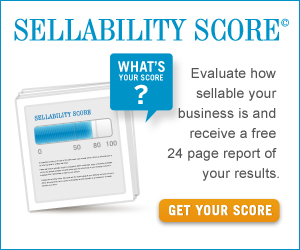Republished with permission from Built to Sell Inc.
How to make your company irresistible to potential buyers

Photo by: Michael Coghlan licensed under Creative Commons Attribution 2.0 Generic
One of the biggest factors in determining the value of your company is the extent to which an acquirer can see where your sales will come from in the future. If you’re in a business that starts from scratch each month, the value of your company will be lower than if you can demonstrate the source or sources of your future revenue. A recurring revenue stream acts like a powerful pair of binoculars for you – and your potential acquirer – to see months or years into the future; creating an annuity stream is the best way to increase the desirability and value of your company.
The surer your future revenue is, the higher the value the market will place on your business. Here is the hierarchy of recurring revenue presented from least to most valuable in the eyes of an acquirer.
No. 6: Consumables (e.g., shampoo, toothpaste)
These are disposable items that customers purchase regularly, but they have no particular motivation to repurchase from one seller or to be brand loyal.
No. 5: Sunk-money consumables (e.g., razor blades)
This is where the customer first makes an investment in a platform. For example, once you buy a razor you have a vested interest in buying compatible blades.
No. 4: Renewable subscriptions (e.g., magazines)
Typically, subscriptions are paid for in advance, creating a positive cash-flow cycle.
No. 3: Sunk-money renewable subscriptions (e.g., the Bloomberg Terminal)
Traders and money managers swear by their Bloomberg Terminal; and they have to first buy or lease the terminal in order to subscribe to Bloomberg’s financial information.
No. 2: Automatic-renewal subscriptions (e.g., document storage)
When you store documents with Iron Mountain, you are automatically charged a fee each month as long as you continue to use the service.
No. 1: Contracts (e.g., wireless phones)
As much as we may despise being tied to them, wireless companies have mastered the art of recurring revenue. Many give customers free phones if they lock into a two or three-year contract.
When you put your business up for sale, you’re selling the future, not just the present. So if you don’t have a recurring revenue stream, consider how best to create one, given your type of business. It will increase the predictability of your revenue, the value of your business, and the interest of potential acquirers as they look to the future.
Why not find out now if your business is sellable?
This free online tool is the only no-risk step you can take to determine if your business is ready to get full value. Fast-track your analysis by taking advantage of this free, no-obligation free online tool.
This Sellability Score you instantly receive is a critical component to any business owner’s complete financial plan and is something that, until now, we have only made available to existing clients.
However, we recognized that there is value in knowing in advance of working with a financial planner whether or not your largest asset is ready to be exchanged for your retirement nest egg. Our view is that you are better to learn more about your businesses sellability today and find out how your business scores on the eight key attributes so that you can ensure you obtain full value.
If your business part of your retirement plan, finding out your sellability score will be the best 10 min. you could ever spend working “on” your business.
Take the Quiz here: The Business Sellability Audit
 For more free information on Creating A Business Owner’s Dream Financial Plan, you can listen to a free, eight part series we did exclusively for business owners. The show is also available to subscribe to for free via iTunes.
For more free information on Creating A Business Owner’s Dream Financial Plan, you can listen to a free, eight part series we did exclusively for business owners. The show is also available to subscribe to for free via iTunes.









